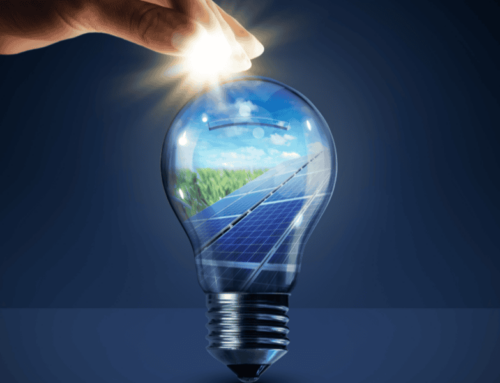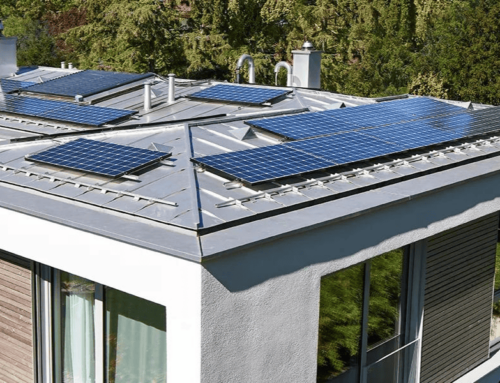The history of solar stretches back thousands of years, but what if we told you this story comes with a spooky twist? From ancient civilizations harnessing the sun’s rays to eerie blackouts where solar saves the day, the history of solar power is filled with ghostly warnings and bright ideas that refuse to die. This Halloween, let’s uncover the haunted path that led from the first solar experiments to the clean, resilient solar+ storage systems we rely on today.
To truly appreciate the history of solar, we must journey back to the earliest civilizations. The Egyptians, for example, worshipped Ra, the sun god, and constructed their pyramids to align perfectly with the sun’s path. This attention to solar positioning emphasized their reverence for the sun and showcased their understanding of solar patterns. They even utilized solar heating in their homes, allowing sunlight to warm their living spaces, a concept that resonates with modern sustainability efforts.
Mirasol Solar invites you to take a walk through the shadows of time, where the history of solar meets the spooky season.
The Haunted Origins: Ancient History of Solar Energy
The history of solar begins not with panels, but with fire. Ancient Greeks and Romans used magnifying glasses and polished mirrors to focus sunlight and ignite flames—a trick that seemed like sorcery in its time. Temples carried “eternal flames” lit directly by the sun, a ritual that still feels magical, even a little eerie, today.
In addition to the Greeks and Romans, ancient Chinese cultures also tapped into solar energy. They created solar collectors, which were rudimentary systems that reflected sunlight to heat water. This innovation laid the groundwork for many modern solar thermal systems we use today. These early adopters faced challenges, yet their persistence demonstrated the power of solar energy long before it became a popular subject in modern discourse.
The Ghost of the 1800s: Early Solar Cells
In 1839, French scientist Alexandre Edmond Becquerel discovered the photovoltaic effect. This discovery sparked the beginning of solar energy’s history in the industrial era. But at the time, no one believed this hauntingly mysterious effect would one day power entire homes. It lingered in obscurity for decades—like a ghost waiting to return.
Becquerel’s discovery holds immense significance. His work opened avenues for scientists like Thomas Edison and Nikola Tesla, who further explored electricity generation. Edison’s involvement in the development of electric power ultimately led to the broader acceptance of solar energy technologies. While the early solar cells were impractical for household use, their development sparked interest that would fade and revive through the decades, like the lingering spirit of innovation.
The Haunted Boom: Bell Labs and the First Solar Panels
Fast forward to 1954: Bell Labs unveiled the first practical solar cell. This eerie invention seemed almost supernatural—it turned sunlight directly into electricity. Despite its high cost, this innovation ushered in a new era in solar technology, enabling the lighting of satellites, remote stations, and ultimately, homes such as yours.
By the late 1950s, the practical applications of solar technology began to expand. Not just confined to satellites anymore, the emergence of solar panels gave rise to a new era. Notably, in 1960, the first solar-powered spacecraft, Vanguard I, demonstrated the potential for solar energy beyond our atmosphere. This paved the way for additional innovations, including solar-powered vehicles, which continue to capture the imagination of inventors and manufacturers alike.
Solar in the Shadows: The Energy Crisis of the 1970s
During the oil crises of the 1970s, the history of solar took a dark, urgent turn. Fuel shortages left nations vulnerable, power grids strained, and communities desperate for alternatives. Like a hero rising in a horror story, solar energy re-emerged as a savior in uncertain times.
During the 1970s crises, various governments invested heavily in research and development of alternative energy sources, with solar energy at the forefront. The U.S. established the Solar Energy Research Institute in 1977, signaling a commitment to solar energy solutions. This period also saw the rise of grassroots movements advocating for solar energy adoption, laying the groundwork for the renewable energy revolution we see today.
Modern Monsters: Why Solar Is Needed More Than Ever
Today, climate change, extreme weather, and rising energy costs loom like modern-day monsters. However, the history of solar energy provides us with a powerful tool to combat these challenges. Pairing solar panels with battery storage ensures homes stay safe and powered even when the grid goes down.
In the modern context, solar energy is not just a viable alternative; it is becoming a necessity. As extreme weather events become more frequent, the resilience offered by solar+ storage systems is critical. For instance, in areas prone to hurricanes or wildfires, solar energy can provide power when traditional sources fail, creating a lifeline for affected communities. This practical application serves as a reminder of how solar energy has evolved to meet contemporary challenges.
Learn more about Mirasol Solar’s battery storage solutions.
Spooky Solar Myths That Refuse to Die
Myths haunt the history of solar energy.
Myths surrounding solar energy may be intriguing, but they undermine the substantial benefits of this technology. Consider the misconception that solar panels are only effective in sunny climates. In reality, solar technology can generate electricity even on cloudy days, proving its versatility. By addressing these inaccuracies with clear, factual information, we can promote a deeper understanding of the true capabilities of solar energy.
-
“Solar doesn’t work at night.” (True—but that’s why we have batteries!)
-
“Solar is too expensive.” (Costs have fallen more than 80% since 2010.)
-
“Solar won’t last.” (Panels today can produce energy for 25+ years.)
Like zombies, these myths rise again and again—but facts slash them down.
The fight against these myths is crucial in promoting solar energy’s adoption. Education plays a vital role in this process. Initiatives that provide information about solar technology’s performance, financial incentives, and environmental benefits can dramatically shift public perception. Moreover, testimonials from satisfied users can serve as powerful tools to dispel fears and misconceptions.
The Future Is Bright (and a Little Spooky)
The history of solar reminds us: energy is power, and power is survival. From ancient fire-starting mirrors to today’s cutting-edge solar batteries, solar has always been about resilience. This Halloween, while others fear blackouts, you can rest easy knowing Mirasol Solar keeps homes glowing, resilient, and ready for whatever storms come.
As we look ahead, the advancements in solar technology give us hope. Innovations such as building-integrated photovoltaics (BIPV) and solar skins are transforming the aesthetics of solar panels, making them more appealing to homeowners. Additionally, the integration of smart technology allows for better energy management, optimizing usage based on real-time data. This intersection of technology and sustainability not only highlights the bright future of solar energy but also emphasizes its adaptability in an ever-changing world.
Conclusion
Ultimately, the history of solar reflects our quest for sustainability and resilience. As we embrace this clean energy source, we honor the innovations that brought us here and prepare for a future that prioritizes renewable energy. This Halloween, let the story of solar inspire you to join the movement towards a brighter, greener tomorrow—one powered by the sun.













